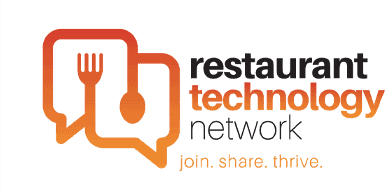Operating a restaurant means constantly reassessing how to make things more efficient. Would changing the layout give servers more space to drop dishes faster? Would switch to counter service increase sales? Would adding online ordering improve take-out numbers? Restaurateurs agonize over these factors.
But one space it’s easy to make changes for the better is the Front-of-House. Rather than rebuild a kitchen at great expense or relocate a dining room to attract more customers, why not strive to make customers happier with an improved FOH experience?
It’s possible, and we’ll tell you how.
In this guide, we’ll look at six strategies to make your front-of-house more efficient.
Empower Your Host
A guest’s first impression almost always comes from the host — or at least it should, and this person plays a crucial role in keeping the dining service ball rolling. Want to set a diner’s experience off on the right foot? Train a host to greet customers, triage dining areas quickly, and be empowered to manage small fires as they come up.
This can improve the speed of the entire dining experience. With a great attitude and logistics savvy, a top-notch host can make a restaurant shine with efficiency.
Assign Roles Clearly
From the host to the busboy, everyone working in the FOH needs to clearly understand their role and appreciate its importance to the restaurant.
That means that a server knows how important it is that they work swiftly and accurately within their assigned space, and a busboy understands that they’re there to support their servers. When everyone knows exactly how they help the greater good, they can work to their potential and make the restaurant operate at 100 percent.
Keep Waiting Customers Happy
Bottlenecks at the door may be a sign of a successful business, but they can also turn diners off and cause you to lose customers.
Instead, streamline your waitlist with places for diners to go — be it the bar or a patio — and figure out protocols to inform them when their table is ready. For instance, many chain restaurants have moved to beepers, while other restaurants rely on text messages to let diners know when their table is ready.
Embrace Contactless Dining
Want to make things efficient? Now is the time to hop aboard the contactless dining train. Now more of a customer expectation than an option, contactless dining can speed up your service flow by allowing guests to book a reservation online, order online, and even pay online, all without having to touch anything in the restaurant.
And it’s easy to get started. With OneDine’s contactless dining solutions, restaurants can quickly set up their platform with a standard tablet or with no hardware at all. From there, it’s merely a matter of customizing OneDine for your restaurant and alerting customers to its use and how to optimize it to their specific tastes, from favorite menu items to dish recommendations.
Hold Pre-shift Meetings
Don’t make gathering with your staff a crisis-only event. Instead, institute regular shift meetings that start before customers arrive. This is a time to clarify any protocols, go over menu changes, encourage morale, and set the tone for the day.
It’s also a time for staff to ask questions, which can spare everyone confusion in the heat of service when things go south and everyone is in the weeds.
Create a FOH Training Manual
It’s great to have a person on staff with institutional memory who everyone turns to with questions, but it’s not an efficient policy should that person go on holiday, become sick, or get dismissed. Instead, put all the important details of how FOH should run in an employee manual.
This document is where everyone can turn if they have a question or need to fix something, rather than asking a manager who might be busy during service. And if you really want to AMP up efficiency, make this a document each employee can take home, so that they have a resource even when they’re off the clock for all of their questions and concerns. Update it frequently and amend when necessary so that it’s a living breathing guide for everyone in your restaurant to use.
Are these the only ways to improve efficiency? Of course not. Hiring great people is step one. Training them well is step two. From there, the act of operating the FOH needs to be fluid and open to changes. As the famous saying goes, “efficiency is doing better than what is already done.”
To really make a restaurant efficient, owners and staff need to be looking to improve and to create a space where others are open to changes. This means you must make your restaurant culture a place where new ideas aren’t just heard but are allowed to be tried so you can see how best to improve everything from the food to the way a customer places an order.





